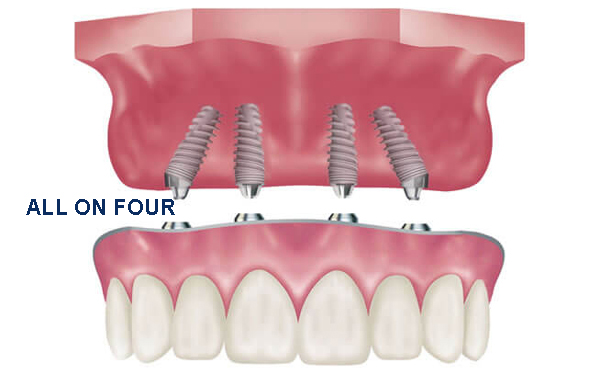Introduction
Dental implants are widely regarded as the leading solution for replacing missing teeth and restoring functionality and appearance. Yet, traditional implants are not always possible for everyone. Factors such as bone density loss, anatomical limitations, or certain medical conditions can leave some patients without clear options. Fortunately, advancements in implant dentistry now make it possible for many individuals to access tailored treatments, such as zygomatic dental implants, that suit their specific needs and circumstances.
Modern alternatives like mini dental implants, root-analogue implants, and digital innovations ensure that even those facing unique dental challenges can achieve stable, secure, and natural-looking tooth replacements. With more choices than ever, understanding which solution is best requires thorough assessment and guidance from a specialist in dental implantology.
Mini Dental Implants: A Less Invasive Alternative
Mini dental implants are about half the diameter of standard implants, making them ideal for patients with minimal bone volume. Their minimally invasive placement means less discomfort and quicker healing, often without bone grafting. Mini implants can securely retain dentures, restore small teeth, or provide a viable solution for patients whose bone anatomy precludes regular implants.
With faster, less complex procedures, mini implants are beneficial for seniors and those with health issues that limit surgical options. However, the reduced size means they may not always be suitable for areas with strong bite force requirements, so careful evaluation by a dentist is crucial.
Zygomatic Implants: Anchoring in the Cheekbone
In cases of severe upper jaw bone loss, traditional implants typically require bone grafting, which is invasive, costly, and time-consuming. Zygomatic implants represent a groundbreaking alternative. These longer implants anchor in the zygomatic (cheek) bone, which remains dense even when the jawbone deteriorates. As a result, patients can bypass bone grafting altogether—shortening treatment time and improving success rates.
Zygomatic implants restore functionality and aesthetics in patients once deemed “hopeless cases.” Recent clinical reviews in publications like PubMed highlight their increasing predictability and patient satisfaction, emphasizing the value of these innovations in modern dentistry.
Root-Analogue Implants: Mimicking Natural Tooth Roots
Root-analogue implants represent a highly personalized approach, crafted to precisely match the shape and size of a patient’s original tooth root. These custom implants are placed immediately following tooth extraction, fitting the natural socket and minimizing bone loss. By closely mirroring the anatomy of the lost tooth, root-analogue implants promote faster healing, superior integration with the jaw, and preserve the surrounding gum tissue.
The technique best suits single-tooth replacements and requires specialized imaging and manufacturing. As technology advances, more clinicians are adopting root-analogue designs for complex anterior or esthetically demanding cases.
Guided Implant Surgery: Precision and Predictability
Guided implant surgery has transformed dental implant placement. Using digital impressions, advanced 3D imaging, and computer-aided design, clinicians can map out the exact location, angle, and depth for implant insertion before making an incision. The result is precise alignment, fewer complications, and reduced trauma to surrounding tissues.
Patients benefit from greater predictability, reduced chair time, and improved aesthetics. Studies confirm that computer-guided surgery reduces the risk of nerve or sinus damage and improves long-term implant success rates. For more information, refer to this PubMed article.
Immediate Loading Implants: Instant Functionality
Traditional dental implants typically involve a multi-step process that requires several months of healing before attaching the final crown or denture. This waiting period allows the implant to fully integrate with the jawbone fully, ensuring long-term stability. In contrast, immediate loading implants—often called “same-day implants”—enable the placement of a temporary tooth or prosthetic immediately after the implant procedure. This innovative method significantly reduces overall treatment time, providing patients with function and aesthetics in one visit. However, not everyone is an ideal candidate. Successful immediate loading depends on bone density, gum health, and healing ability. Consulting with a qualified dentist is essential to determine whether this accelerated treatment approach aligns with your dental condition and long-term oral health goals.
Considerations and Consultation
The growing range of non-traditional dental implants has broadened treatment possibilities for patients who may not qualify for standard procedures. Options like mini implants, zygomatic implants, or all-on-four systems can address complex bone loss cases or unique anatomical challenges. However, each patient’s situation is unique—factors like overall health, bone density, bite alignment, and aesthetic expectations influence the most effective approach. This is why a thorough dental evaluation is essential before proceeding. A detailed consultation with an experienced implant specialist ensures that every aspect of your oral health is assessed, enabling a personalized treatment plan that maximizes function, comfort, and long-term success using the most suitable advanced or non-traditional implant solution.
Conclusion
Recent advancements in implant dentistry have dramatically expanded treatment possibilities, allowing more individuals to restore their smiles and oral function—even those deemed unsuitable for conventional implants. Modern techniques and materials now accommodate many bone structures and aesthetic goals. Options such as mini implants, root-analogue implants, and zygomatic implants offer personalized solutions tailored to each patient’s unique anatomy and needs. These innovations improve comfort, durability, and overall success rates, making dental restoration more accessible and practical. By collaborating with an experienced dental team, patients can evaluate the most advanced treatment choices and confidently pursue a customized plan that enhances their oral health and long-term quality of life.

